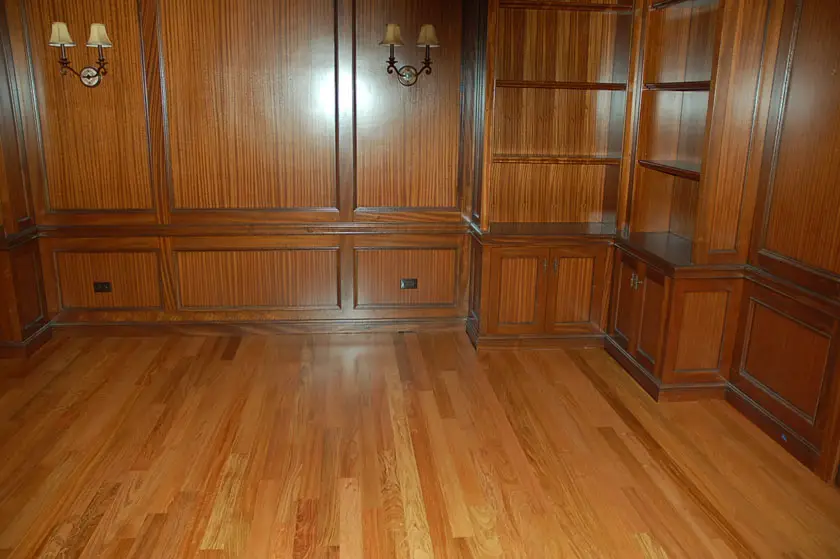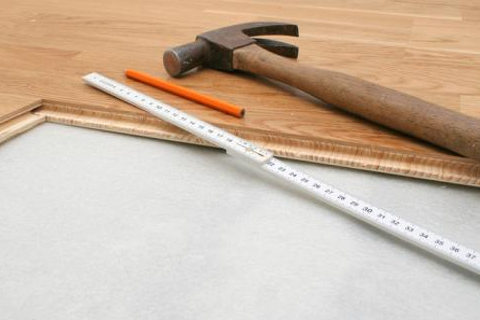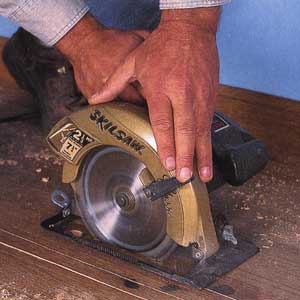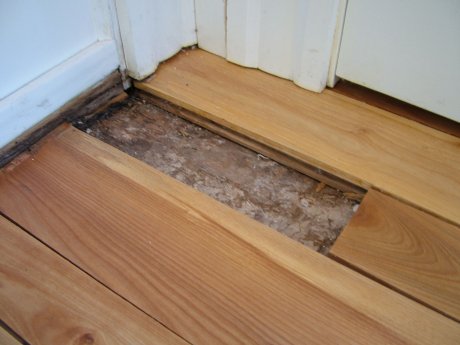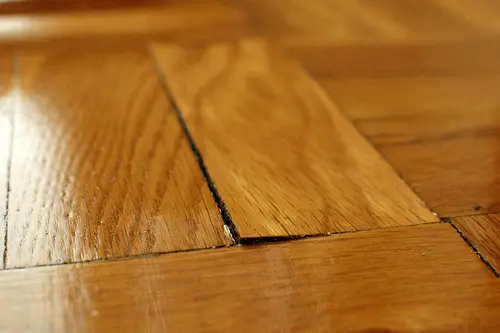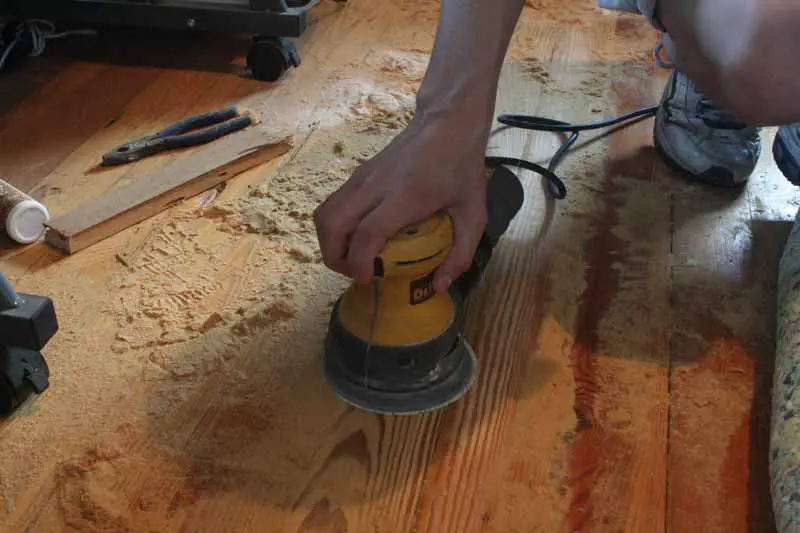Bamboo flooring is one of the most popular, resilient, and beautiful options available to those looking to upgrade their homes. Which is all very well, but unless you’re independently wealthy, budget is also going to be a consideration in your flooring decision making. By taking some time to understand what elements factor into the cost of bamboo flooring, you can take a more agile approach to your renovation plans, make confident decisions, and — most importantly — keep those budgets down.
Answering the question of how much bamboo flooring costs is not as simple as looking at the online averages — which, depending on where you look, is estimated between $750 and $1300 per room — and getting to work. We’re not going to be of any help to you if we just pluck a price out of the air and expect you to muddle through as best you can. The honest answer is, the cost of bamboo flooring really depends on your approach. Perhaps you’re an avid DIYer with a bit of know-how and some useful equipment in the garage. On the other hand, you may be one of those myriad of us who knows your limitations, and are quite happy to let the experts ply their trade. Either way there’ll be a selection of budgetary issues that will contribute to your final cost.
The final cost of bamboo flooring will come down to a few key aspects. Your choice of materials, where you’re sourcing them from, the labor or equipment costs of installation, and — an aspect many overlook — essential maintenance to keep it safe and beautiful for years to come. It’s worth remembering that bamboo is a premium quality product, and with that comes cost. But it’s also an investment. Like all investments, it’s essential you do some research, and seek out guidance.
We can certainly help you along the way.
Materials
Whether you’re setting off on your own DIY flooring adventure, or engaging a professional, material costs will be among your first considerations. If you are new to the area, it can be a little bit overwhelming, but at the most basic level, your choice of bamboo flooring options will likely revolve around what you’re hoping to get out of your hoping to achieve in the target room. Are you leaning toward aesthetic considerations? Longevity? An easy to clean surface that suits your lifestyle? There are material options that cover each of these goals, and some which give a basic coverage of all three. It’s worth bearing in mind that your expectations of your material will certainly factor into the bamboo flooring cost.
However, before making any solid decisions, you should take some time to understand some of the finer points of bamboo flooring, in order to help guide your search and budget considerations.
First off, bamboo is not a tree, unlike those used in other wood flooring options. It’s a grass that grows abundantly in warmer areas of the globe. It’s been used for over 4,000 years, mostly in early civilizations in the Far East and South America. Bamboo’s uses range from the kitchen, the battlefield, libraries, hospitals and the buildings themselves largely due to the fact that it ranks high in the Janka Hardness Scale. With a tensile strength of 52,000, this fragile looking tall grass swaying in the direction of the wind is actually harder than most commercial soft and hardwoods used for flooring.
Why is this important to know? Well, by understanding bamboo’s qualities, you gain a better insight into why the flooring materials are constructed in certain ways. This helps you make better informed decisions that help balance the budgetary aspect. The first thing you’ll notice when selecting your materials is the manufacturing process that has been used. This will generally fall within 3 categories:
- Strand Woven – generally considered to be the hardest wearing of the bamboo flooring materials. It is manufactured by stripping the bamboo down to its fibers, combined with resins, and then compressed under significant heat and pressure. Once these have been molded into solid blocks, they are trimmed and laminated into boards fit for flooring. This process, and its relative longevity, contributes to making strand woven among the higher bamboo flooring cost options. Depending upon the manufacturer, current averages for strand woven run at about $3-$5 per square foot.
- Horizontal and Vertical bamboo flooring – this method is relatively simple, involving stripping the bamboo into thin strips and then gluing these together in order to form flat planks. While less well wearing than other types, this process has an aesthetic appeal due to the retention of grain. Currently, horizontal and vertical bamboo flooring cost is usually found between the $2 – $5 per square foot mark.
- Engineered Bamboo – For those on the lower end of the budget, pure bamboo materials may not be a practical consideration. The manufacturing process for this type involves applying a core of MDF underneath thin layers of bamboo. This option is neither particularly hard wearing, nor refinishable, however that does tend to result in a lower price tag, coming in on average at $2 per square foot.
Aside from the core manufacturing process, another material factor to consider is carbonization. This is a largely aesthetic aspect, which results in the bamboo flooring having a richer color pallet. The costs aren’t prohibitive, usually falling in line with strand woven options. However, since the process entails use of chemicals and tremendous amount of energy to carry out, more and more people now opt for natural hues.
DIY Installation
Taking the reins on your flooring project can be a rewarding experience. Not to mention that you tend to save money, particularly if you have some of the equipment already to hand. However, it’s important at this point to really consider whether it’s realistic for you to sacrifice the benefit of expertise in order to save some money. However, if you are intent upon installation yourself, there are a few budgetary considerations to bear in mind.
Materials
Aside from the type of material you’ll be using (as detailed above), when undertaking home installation it’s imperative that you consider the possibility you’ll make some mistakes. When you go out to buy bamboo flooring, be sure to add about 5-10 percent of the material to allow room for errors as well as spares should there be a need to replace some planks or boards in the future.
You’ll also need to take into account that the condition of your subfloor will affect not only the appearance of the bamboo flooring but also its durability. It’s important to have a structurally sound subfloor to support the bamboo flooring. If you need to replace, repair, or adjust your current subfloor before starting work, this could add to the price tag.
Equipment
The cost of bamboo flooring self installation can be exacerbated by the need to purchase new tools. Therefore it’s worth reviewing which of the following you have at home, and factoring the price of any missing items into your budget:
- measuring tape
- hand saw or power saw
- tapping block
- wood or plastic spacers
- pry bar
- hammer
- chalk line
- pencil
There are several ways to install bamboo flooring and these types of installations will also require different tools.
Nailed-down Installation – for this type, we need:
- the appropriate nailer/nail gun
- nail application chart
Glued-down Installation – for this type, we need:
- recommended flooring adhesive
- trowel
- pail, optional for mixing adhesive
Floating Installation – for this type, we need:
- poly film foam or other manufacturer recommended product
- PVAC glue
- poly or duct tape
While most of us certainly go by the adage “measure twice, cut once” to avoid mistakes, it’s best to err on the side of caution and assume that you’ll need a little more of these items than strictly required. Don’t budget to get it right the first time unless you are confident in your expertise in the area.
Professional Installation
There are various reasons why professional installation may be the best option for you. Convenience or lack of know-how might mean that it’s a more prudent step to take, alongside the reassurance that your floor has been fitted by an expert that understands how to operate in a way that supports longevity.
Unfortunately, convenience and expertise tend to come at a premium price, so here’s some things to bear in mind when assessing the cost of bamboo flooring pro installation.
Research by Homeguide suggests that the current average labor cost on top of materials runs at approximately $3 – $5 per square foot. This means that the cost of installation is about as much as the average for materials at the upper end of the market.
Remember, though, that this is just the cost of the labor itself, and likely won’t also take into account sundry requirements such as any required underlay, removal and disposal of pre-existing floor, or preparation and protection of baseboards and static features such as cupboards and fireplaces. Consideration too must be paid to underlying problems that may hamper the installation process, such as weak or damaged floorboard and joists — it could be the case that your pro installer will need to repair these, raising the budget requirements overall.
One of the bamboo flooring costs involved with installation that is easy to overlook is the potential for accommodation for your professional. In most cases, your contractor will be able to advise you in advance whether this will be a necessity; considering the length of time the installation will take and how far away from their home base the work site is. This could still be a factor with a relatively small room if there is a need for stains to be applied as these can take upwards of 24 hours to dry.
This is where some intelligent research can really help you to keep costs down. In making your cost comparisons, consider:
- Can you save some money by removing and disposing of the existing flooring yourself?
- Engaging in a meaningful dialogue with your professional bamboo flooring installer. It may be the case that they’re happy to use lower-priced materials you’ve sourced yourself, or they may be able to secure better deals through the wholesale relationships they’ve built over time and experience.
- Investigating signs of structural damage on your floorboards and joists. Are they squeaky? Do the floors shift when you walk on them? Do parts of the floor appear sunken? It’s worth getting separate quotes from your floorboard installer and a professional in these types of repairs — it may be the case that you can save some money here, or plan to space out the costs.
- Negotiating the cost of accommodation if it is required. If you have contacts with hotel or Air BnB spaces available, perhaps you can obtain a discounted price.
On the plus side, the costs of installation equipment, required adhesives, protective sealants, and fasteners are all generally included in the installation fee. However, contractor standards often vary; don’t be afraid to really dig in to understand what is included in their pricing, bring up potentially costly scenarios, and what your options would be. Remember, you’re engaging an expert in their field — use their knowledge to your advantage.
Maintenance
How much bamboo flooring costs does not end at materials and installation. When making a decision about whether this is the correct material for you and your family, it’s worth bearing in mind the cost of essential upkeep in the future. Certainly, the higher end range of the floorboards themselves — strand woven — are relatively hard wearing; but do you need to take additional measures against heavy traffic, fluctuating moisture levels, or the inherent risks of rambunctious, messy children?
If you’ve elected to buy a bamboo flooring option that has been pre-treated, you won’t need to apply any additional sealant. However, if for aesthetic or budgetary reasons you’ve opted for an unfinished product, you’ll need to budget for sealant.
One of the enduring misconceptions about bamboo flooring is that it naturally has sufficient protection from the elements. While there is an element of truth in this — bamboo has a natural layer of biogenic silica, that protects the base material from harsh elements — this is usually significantly deteriorated by the manufacturing process. We can’t assume that our finished floorboards have retained their natural protective properties; particularly in the low cost bamboo flooring.
If you’re undertaking this process personally, attention needs to be paid to preparation. Depending on the manufacturing process, elements of the silica layer may still be present, which means that any sealant you apply on top of this runs the risk of failing to adhere, or flaking off — resulting in more of your budget going down the pan. You’ll need to strip the top layer of your floorboards following installation,and sand it until it is smooth. Which means the cost of a power sander with 60 and 100 grit sandpaper may need to be added to your overall flooring budget.
The sealant itself is not prohibitively expensive; a gallon of good quality polyurethane sealant doesn’t usually run much over $40, but this can obviously vary depending upon the brand you choose. You’ll also need to incorporate the cost of some good quality mop applicators into your budget — though these are usually only around $20, all of these little expenses have a tendency to add up. It’s also prudent to bear in mind that this is unlikely to be a one-off expense; in order to keep your bamboo flooring looking fresh, it’s usually recommended that this process is undertaken once every 6 months or so.
Don’t skimp on the little extras that keep your flooring from becoming scratched, either. Apply felt pads to the bottom of furniture. Buy some doormats to discourage the tracking and staining of dirt into the grain of the floorboards. If you’ve installed bamboo in a bathroom or kitchen, invest in good quality rugs to surround sink, shower, and bath areas as water spillages over time can lead to warping. These small expenses following installation can prevent the more significant ones in future.
How Much Does Bamboo Flooring Cost?
Ultimately, the final cost of bamboo flooring will depend upon a variety of factors. The base material options range from the lower quality engineered floorboards (approximately $2 per square foot) to the well produced and hard wearing strip woven variety (around $4 per square foot). Professional installation could add another $5 per square foot, and means you can be confident that you’ve received a quality product and fitting. On the other hand, DIY enthusiasts could save money in labor, but this needs to be weighed against additional equipment and material expenditure. Each installation option also has the potential to result in ancillary costs which need to be taken into account.
Keeping costs low is essentially a matter of quality research. Don’t rush into a project, or signing a contractor. Survey the target rooms, consider whether the materials are appropriate to the traffic it sees. Take a measured approach, explore all the options, and seek expert help where needed. This not only helps to ensure you’re minimizing the cost of bamboo flooring, but can rest assured that you have taken steps to ensure you’ve made decisions which result in quality and longevity.


